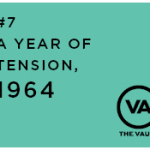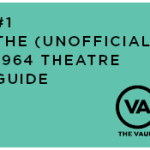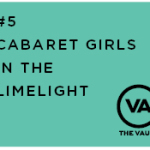“A national theatre cannot hope to survive if it keeps staging foreign plays.” ~ Lim Chor Pee.
In the early to mid-sixties, there was a brewing sentiment for the need to forge a local identity in English-language (or English-speaking) theatre. We list a few extracts from some key commentaries reflecting on the theatre scene and its challenges in the ’60s:
Excerpts from a commentary by D. Morton Davies, “The case for a Malayan theatre” (The Straits Times, 20 Nov 1960). View.
“Malayan theatre, like the dew, must just happen. It cannot be forced upon anyone or anything. Everyone says so and not only about theatre. But I feel that of all the arts, theatre is most amenable to Malayanisation. A Malayan theatre IS possible. If we cannot force the dew we can at least bring together the elements that will make the dew for us. The shape will ultimately be based on conventional Western play form, written in Malay with Malayan settings and idioms and examining Malayan problems…”
“Everything keeps pointing towards the Western theatre form. The presentation is straightforward from an audience point of view…
“The need now is plays, plays – Western, translations, or original. Original for preference.”
An excerpt from playwright Robert Yeo’s introduction in the published Mimi Fan book (Epigram Books, 2012, pp. ix). View.
“It is possible to trace the origins of Singapore theatre in English in the two plays Lim Chor Pee wrote and staged in the early 1960s. They are Mimi Fan in July 1962 and A White Rose at Midnight in 1964.
At the time he wrote these plays and had them produced, Lim was seething with what must be described as anti-colonialist fervour. Singapore became a nation in August 1965 after its separation from Malaysia. He probably did not know that this was to happen but Lim had already written and published an article in a local magazine in 1964, in which the prescient sentence is found, “A national theatre cannot hope to survive if it keeps staging foreign plays.” The title of the article was provocative—Is Drama Non-existent in Singapore? (source: Tumasek, 1 January 1964, p. 42)”
Excerpts from an article written by Lim Chor Pee, “Is Drama Non-existent in Singapore?” (Tumasek, 1 Jan 1964, pp. 42-44)
“…English is English as written by the British and no one else could really write English creatively. Perhaps it was part of the colonial tradition that few dared to challenge the myth. I bring this up because I believe that the absence of an English speaking drama in this country is due to the absence of any substantial creative writing, literary or dramatic…
[English speaking theatre] has to start at some point, and this point is the amateur theatre. The amateur theatre anywhere in the world is the place where the future professional theatre begins. And there can be no proper theatre unless there are playwrights. And there can be no playwrights unless there is a theatre to express their plays. In other words, both the playwright and the theatre are part and parcel of the same evolution…
Excerpts from interviews with Lim Chor Pee (2001). Transcripts available at National Archives of Singapore.
“…at that time in England, there was also a new interest in theatre in the sense that there were a lot of emerging youth writers who were writing new plays, people like Harold Pinter and John Osborne…there were quite a few plays then being written which is [sic] totally different from the old type of drawing room drama or comedies and ordinary themes, you know. And they were not more revolutionary in the sense that they wrote about hardships, they wrote about life in its reality and not as you wish to see it to be. So I thought we should have something locally as well to see how… I mean, generate some theatre interest, drama interest, here.
“…in Singapore at the time, the theatre scene was very barren. There was nothing much when I came back in 1960s [from Cambridge]. You find that the only people producing plays regularly was The Stage Club comprising expatriates and the type of plays that they were producing were drawing room dramas… but nothing of the new wave of plays written by the new wave of plays written by the new writers. So I felt that it was not very exciting at that time – theatre, the scene in Singapore.”
Excerpts from an article by Robert Yeo, “Singapore English on Stage” (English in Southeast Asia Conference 1996, National Institute of Education, Singapore, 21-23 November 1996). View.
“The attempt to find a viable and successful stage language in the sixties was successful when the characters are well-educated English speakers and use English as their dominant language; it was less successful when the characters are less educated in English or not at all. For the less educated, the problem is one of the speech being ‘not in character’…
“A second problem about stage language in English is shown up when the characters are not English-speaking at all but speak either only Malay, Tamil or Chinese dialects. How does a playwright represent them in English since English is the writer’s chosen language? Two possibilities offer themselves. The first is to have them speak grammatically in English, because in fact they would be speaking grammatically in their own languages, and to indicate their ethnic origins by pronunciation, tone, articulation and other phonetic means unique to the linguistic group. This is the best solution though it is not entirely problem-free. The second is to represent characters as speaking a ‘broken’ English, one in which the words are English but the syntax is not.”
Excerpts from an article by Shirley Geok-Lin Lim, “Finding a Native Voice – Singapore Literature in English” (Journal of Commonwealth Literature, 1989)
“The pattern of Malayan/Singapore writing from the 1940s to 80s is that of premature births and early deaths – a process generally acclaimed with overoptimism on the part of missionizing critics and condemned by so-called anti-colonialist, mostly foreign, observers.
The English-language creative writing scene is as complicated, arduous, and full of contradictions as is the continuing formation of a Singaporean society and nation, and those problems which plagued the pioneers in the late 1940s – problems concerning choice of language, mastery of forms, types of subjects, attitudes towards local colour, and the repressive, suffocating influence of English literature criteria, standards, styles and diction – are still unresolved today.”
By Daniel Teo
Published on 15 September 2014
The Vault 1.1 – Nineteen Sixty-Four revisits When Smiles Are Done and A White Rose at Midnight, refreshes and retells the stories in them through the eyes of four artist-collaborators on 22 September 2014, 8pm at Centre 42 Black Box. Admission is free.
Find out more here.






